More than just time-wasters, virtual worlds online have become a lifestyle for many. Or, better put, a second, virtual lifestyle. Some find them pointless, others ridiculous, but their immense commercial success and huge popular appeal indicate that they are so much more. They are dream worlds that we all want to escape into after a hard day’s work, in which we have no real concerns about the recession, prices rising or corrupt politicians. Here are our picks for the best online worlds.
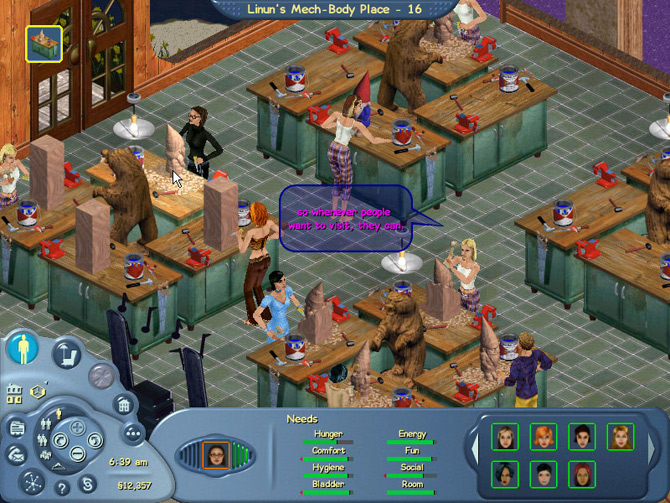
This is one of the best virtual worlds online that you can find, simply because it’s brought to you by the same team that gave us the hit game series by the same name. While heavily marketed toward teens and young adults, who make up the majority of the user-base, The Sims Online is in no way dissatisfying for other age groups. It features the same type of need micro-management as the offline game – make sure your Sim is rested, well-fed and well-socialized and you’ll be having lots of fun with the Sims Online.
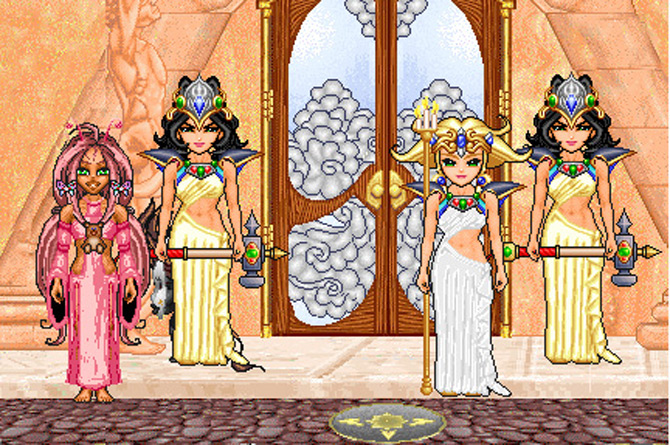
VZones is based on the very first of virtual worlds online – Lucas Film’s Habitat, launched in 1985 for Commodore 64 machines. The current version, re-branded from WorldsAway, is available for both PC and Mac users and features colorful 2D environments. The avatars are fully customizable and their heads are particularly well designed. It features three distinct worlds: Dreamscape, with getaway environments like beaches, malls and casinos, newHorizone, with online versions of London and New York, and Second Kingdom, a fantasy-themed virtual world.
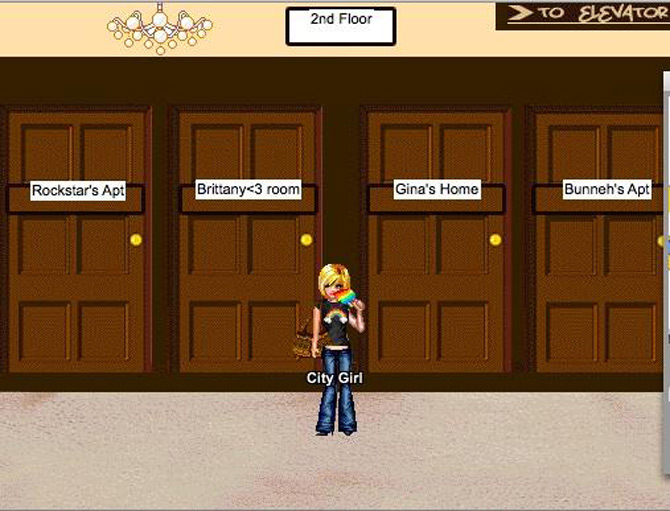
The Palace is one virtual online world that’s ideal for 40+ Internet users. It was originally developed by Jim Bumgarder for Time Warner Interactive in 1995. It is currently not affiliated to any developer, and entirely ran by dedicated users, across a network of servers. The world provides a visual 2D chat space, with photos and original artwork for backdrops. Users can create avatars from any image whatsoever, which makes the world’s best feature its endless number of opportunities for self-expression.
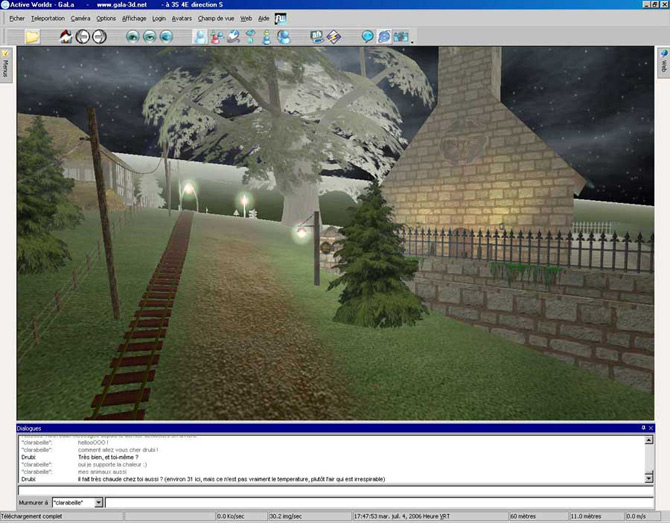
ActiveWorlds was launched in beta in 1995, and made available to general Internet audiences in 1997. General public areas are free of charge, while the ‘citizenship’ subscription costs $6.95 per month. This virtual world has a definite new age, utopian twist, and is great for building objects that visually enhance it and provide infinite interaction options. It’s also very internationally oriented and features many online versions of offline countries.
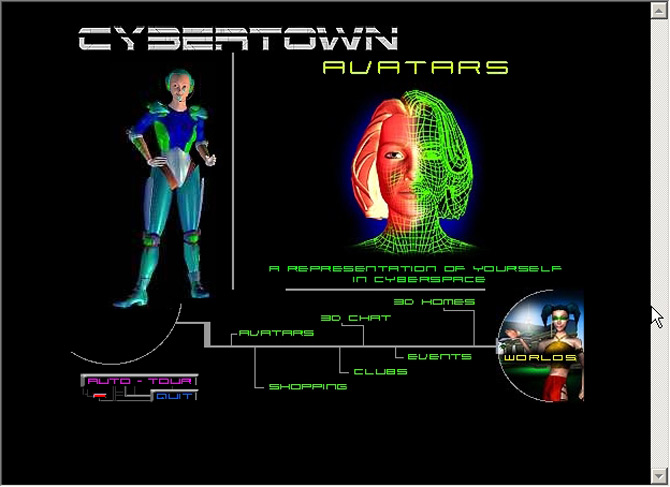
The Cybertown virtual world, launched in 1995, is heavily influenced by the Cyberpunk esthetic. According to the official website, there are over half a million users worldwide, who can build homes, take on in-world jobs and vote in the Cybertown elections. There are also ample leisure opportunities, such as going clubbing, to concerts or to movie theaters. The developers’ main cited influence is Neal Stephenson’s ‘Metaverse’ concept, as featured in his novel Snow Crash.

Kaneva, which is still in beta, is a cross-platform online virtual world, with a 3D client version and a 2D web browser version. Members get the option to fully customize their avatars, create clubs and interact with the community in a variety of ways, including, but not limited to blogs, forums and social media platforms. Means of communication made available include audio, video, photos, private messaging, comments and tags. It’s basically a Facebook-like virtual world, with the added bonus of cool visuals.
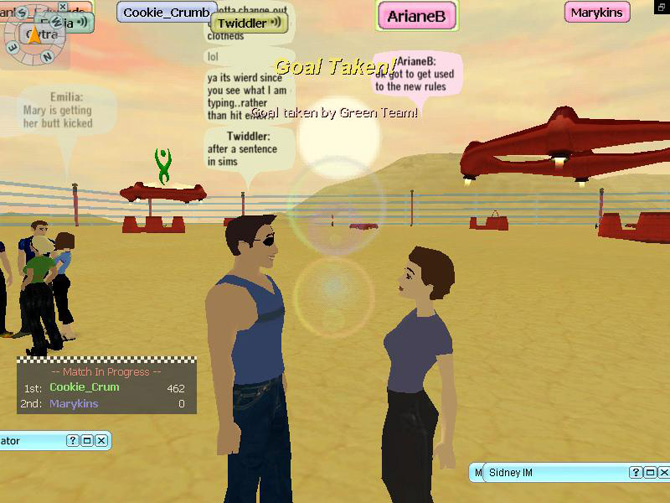
Dubbed ‘a more evolved 3D chat room’ by reviewers, There.com is a transition step between social platforms to current virtual worlds. The platform has built-in multiplayer games, various socialization and communication facilities and object building tools. The 3D user-generated items can either be used privately or sold for in-game cash.
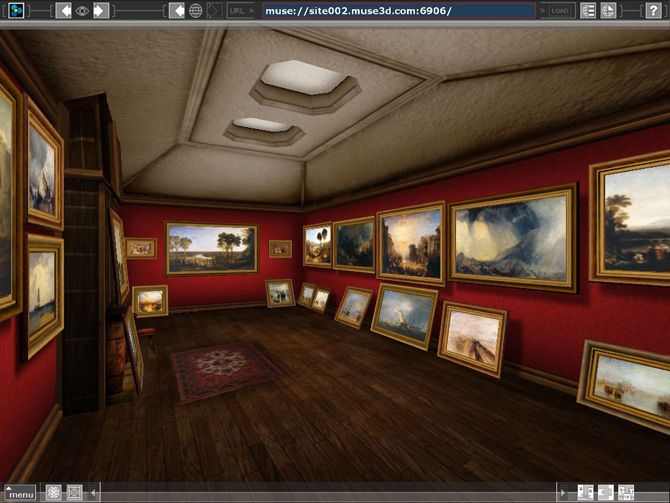
Muse, launched in May 2002, is great for 3D artists who want to create and then sell their created in-game artists to media companies, ad agencies or corporations who are looking toward new media and technologies for promoting their brand. According a company press release, one of Muse’s primary goals is “combining the sensory impact of television with the interactive and networking capabilities of the Internet”. The strongpoint of this virtual world is the seamless way in which it integrates 2D web content into a 3D space. It’s got top-notch graphics, which definitely make it stand out from the host of worlds currently available online.
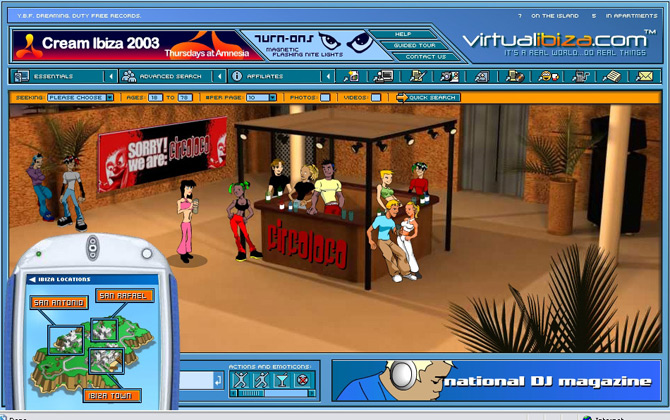
If you’re single and consider online dating an option, then Virtual Ibiza is the place for you to hang out at. It’s based on the real-life Mediterranean resort island on the coast of Spain and specifically targeted at the 18-35 demographic, offline clubbers and heavy partiers. Members receive access to email, instant messaging services, games, message boards, mobile ringtones and searchable dating profiles, complete with personal photos and videos. Access to the world is 18+ only.

Second Life is definitely the best known of virtual worlds online. Launched in 2003, it features free basic accounts and charges $9.95 for additional accounts. There are also premium options available, for those who want to purchase in-game land and have access to a host of other cool options. It’s incredibly well designed and offers a great gaming experience. The atmosphere is highly surreal and perfectly suited for creative artists and techie types. Many users devote themselves to building in-game items by using a scripting language accessible to people with no previous scripting experience. It’s a complex world, with a steep learning curve, but also tons of fun to offer.
1. The Sims Online

This is one of the best virtual worlds online that you can find, simply because it’s brought to you by the same team that gave us the hit game series by the same name. While heavily marketed toward teens and young adults, who make up the majority of the user-base, The Sims Online is in no way dissatisfying for other age groups. It features the same type of need micro-management as the offline game – make sure your Sim is rested, well-fed and well-socialized and you’ll be having lots of fun with the Sims Online.
2. VZones

VZones is based on the very first of virtual worlds online – Lucas Film’s Habitat, launched in 1985 for Commodore 64 machines. The current version, re-branded from WorldsAway, is available for both PC and Mac users and features colorful 2D environments. The avatars are fully customizable and their heads are particularly well designed. It features three distinct worlds: Dreamscape, with getaway environments like beaches, malls and casinos, newHorizone, with online versions of London and New York, and Second Kingdom, a fantasy-themed virtual world.
3. The Palace

The Palace is one virtual online world that’s ideal for 40+ Internet users. It was originally developed by Jim Bumgarder for Time Warner Interactive in 1995. It is currently not affiliated to any developer, and entirely ran by dedicated users, across a network of servers. The world provides a visual 2D chat space, with photos and original artwork for backdrops. Users can create avatars from any image whatsoever, which makes the world’s best feature its endless number of opportunities for self-expression.
4. ActiveWorlds

ActiveWorlds was launched in beta in 1995, and made available to general Internet audiences in 1997. General public areas are free of charge, while the ‘citizenship’ subscription costs $6.95 per month. This virtual world has a definite new age, utopian twist, and is great for building objects that visually enhance it and provide infinite interaction options. It’s also very internationally oriented and features many online versions of offline countries.
5. Cybertown

The Cybertown virtual world, launched in 1995, is heavily influenced by the Cyberpunk esthetic. According to the official website, there are over half a million users worldwide, who can build homes, take on in-world jobs and vote in the Cybertown elections. There are also ample leisure opportunities, such as going clubbing, to concerts or to movie theaters. The developers’ main cited influence is Neal Stephenson’s ‘Metaverse’ concept, as featured in his novel Snow Crash.
6. Kaneva

Kaneva, which is still in beta, is a cross-platform online virtual world, with a 3D client version and a 2D web browser version. Members get the option to fully customize their avatars, create clubs and interact with the community in a variety of ways, including, but not limited to blogs, forums and social media platforms. Means of communication made available include audio, video, photos, private messaging, comments and tags. It’s basically a Facebook-like virtual world, with the added bonus of cool visuals.
7. There.com

Dubbed ‘a more evolved 3D chat room’ by reviewers, There.com is a transition step between social platforms to current virtual worlds. The platform has built-in multiplayer games, various socialization and communication facilities and object building tools. The 3D user-generated items can either be used privately or sold for in-game cash.
8. Muse

Muse, launched in May 2002, is great for 3D artists who want to create and then sell their created in-game artists to media companies, ad agencies or corporations who are looking toward new media and technologies for promoting their brand. According a company press release, one of Muse’s primary goals is “combining the sensory impact of television with the interactive and networking capabilities of the Internet”. The strongpoint of this virtual world is the seamless way in which it integrates 2D web content into a 3D space. It’s got top-notch graphics, which definitely make it stand out from the host of worlds currently available online.
9. Virtual Ibiza

If you’re single and consider online dating an option, then Virtual Ibiza is the place for you to hang out at. It’s based on the real-life Mediterranean resort island on the coast of Spain and specifically targeted at the 18-35 demographic, offline clubbers and heavy partiers. Members receive access to email, instant messaging services, games, message boards, mobile ringtones and searchable dating profiles, complete with personal photos and videos. Access to the world is 18+ only.
10. Second Life

Second Life is definitely the best known of virtual worlds online. Launched in 2003, it features free basic accounts and charges $9.95 for additional accounts. There are also premium options available, for those who want to purchase in-game land and have access to a host of other cool options. It’s incredibly well designed and offers a great gaming experience. The atmosphere is highly surreal and perfectly suited for creative artists and techie types. Many users devote themselves to building in-game items by using a scripting language accessible to people with no previous scripting experience. It’s a complex world, with a steep learning curve, but also tons of fun to offer.
No comments:
Post a Comment